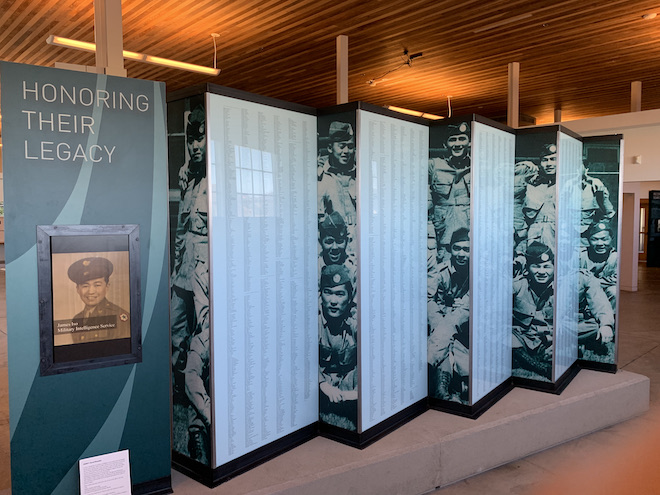In Chapter 12 of Hunters Point, there is an exchange between Kats and Shig as Shig is trying to convince Kats to let him help with a mission. Kats tells Molly and Shig that things could be dangerous.
“And I was in the army too,” Shig said.
“You were an interpreter,” Kats replied.
“Still, army!”
This is a bit of a comic moment, but I want to make clear that those ‘interpreters’ were far more than just language specialists. They were invaluable and incredibly brave soldiers in the cause.
Shig was a translator, which made him part of the Military Intelligence Service during World War 2. The MIS was the first language training school and it began in 1941 as the US could see a potential war coming with Japan. In San Francisco, they recruited an initial class of 60 young Nisei men (and two white men) to learn the Japanese language. Many of the Nisei already spoke and wrote Japanese but they had to be trained in military terminology, geography and navigation.
When Japan bombed Pearl Harbor and America entered the war in December 1941, the class was nearly complete. They graduated and became the first members of the MIS. Because of Executive Order 9066 which created the Exclusionary Zone on the west coast of the United States, all persons of Japanese ancestry were required to leave the zone and were interned in camps located throughout the western and southern states. This meant that the language training school, which was critical to the war effort had to be relocated to Minnesota. There, subsequent classes were trained and deployed to the Pacific theater. They played critical roles in code breaking, communications interception, prisoner interrogation and negotiations. They also were in danger from their own side as there were numerous incidents where Nisei soldiers were shot by fellow American soldiers.

Shig Murao went through the MIS training in Minnesota. He enlisted in 1944 and served for several years. He was deployed to Japan where he and the other MIS translators played key roles in re-establishing normal interactions and communications with the post-war Japanese population.
My father, Paul Kageyama, also went through the MIS school in Minnesota within months of when Shig would have been there. They were born just over one month apart. I’d like to believe that they did know each other, perhaps even attended a class together, maybe even had a beer (or a coke!) together.
The men who served in the MIS were largely unheralded until many years after the war. Because they did not serve in one particular unit like the 100th Battalion or the 442nd Regiment, they were largely overlooked until 2000 when President Bill Clinton awarded all the men of the MIS the Presidential Unit Citation Award.

The Military Intelligence Services Learning Center is located in San Francisco’s Presidio. It is in the original building next to what was Crissy Field where that inaugural class went through language training. There is a memorial there with all the names of the Nisei who went through the school. In November of 2022, I visited there and was proud to have found my father’s name along with Shig’s and hundreds more who served their country despite what their country had done to them and their families.



